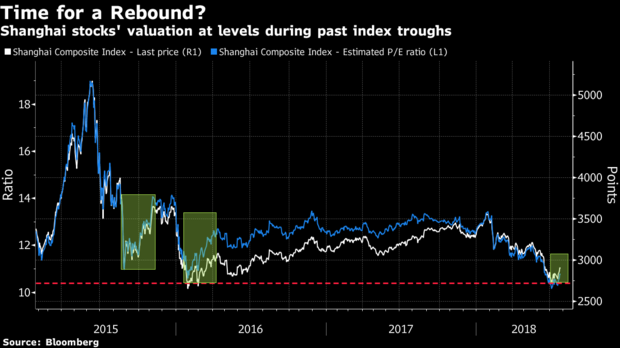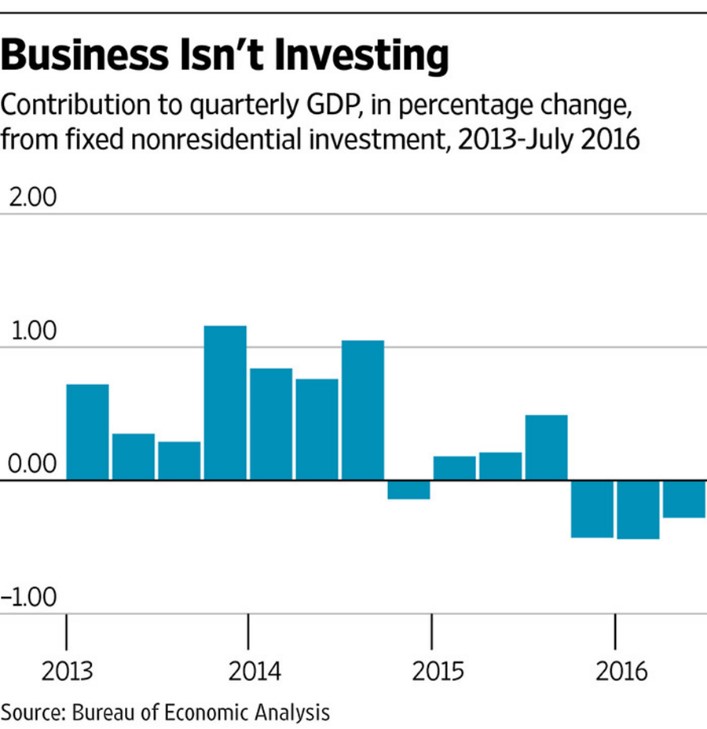The market’s better-than-expected V-shaped recovery since the spring lockdown was derailed briefly by a September correction that approached 10% in many mega-cap momentum stocks. The S&P 500 index advanced 8.9% and the Wilshire 5000 total market index of U.S. stocks gained 5.54% through Q3.
Outlook: 3 Things to Watch:
As one thinks about the next few months and into 2021, the economy’s outlook is complicated by the election, the path of the pandemic, and the stalemate over the passage of another fiscal stimulus program. Election uncertainty is going to be the dominant issue over the next few weeks.
Election 2020: Déjà vu?:
A Biden presidency and potential Democratic sweep would likely mean higher corporate taxes and higher taxes on investment gains. However, a Democratic boost in federal spending could offset any downside from tax hikes and more regulation, according to many Wall Street strategists.
Trump’s business and brief political history has proven that he’s resilient and has Teflon qualities. And, he could surprise the political pundits again in 2020. The race is still too close to call, and there is a very high risk the election could be unresolved on Election Day — markets would not react favorably to that sort of chaos.
Many of Wall Street strategists believe the current price action in markets is signaling a blue wave. Despite all the theories about the markets’ remarkable V-shaped recovery rooted in political bias, markets are apolitical. They care more about who’s in charge at the Federal Reserve Bank. Indeed, price action has been driven by a supportive Fed coupled with the CARES Act.
As we witnessed in 2016, market players are not particularly good at forecasting how the market will react if a Democrat or Republican wins. History shows that the market will likely do better with two more years of gridlock, no matter who wins the White House.
2. Covid-19 Vaccine:
The year 2020 has been filled with numerous surprises no fiction writer could have contrived. There is still the risk that the second wave of Covid-19 will hit the nation at some point, but the market’s price action does not indicate a willingness to embrace a pessimistic view. It seems that the market is anticipating an effective vaccine, which will likely prevent another shutdown, like the one we saw in the spring. Until a safe vaccine is developed and available, the consumer will be reluctant to spend and travel. Many biotech analysts believe a vaccine could be 80 - 90% effective, worst case 70%. According to market veteran Art Cashin of UBS, the markets may be far too complacent in believing that a highly effective vaccine is imminent. Only time will tell.
3. Stimulus:
The U.S. CARES Act proved to be financially beneficial to those impacted by the pandemic shutdown. But the U.S. economy needs another jolt after suffering through the pandemic, and it cannot recover without it. The Fed has done its job on the monetary side. Its quick and aggressive efforts provided necessary stimulus and liquidity to keep the economy from falling into a deep depression. At $7 trillion, the Fed's balance sheet is bloated, and it cannot stimulate growth and the economy — it can only buy time and provide a floor for market volatility.
In a morning note on October 19, 2020, Joe Weisenthal, an editor at Bloomberg wrote: “This has got to be one of the prime lessons of 2020: When it comes to economic outcomes, the state (at least in the developed world) is incredibly powerful. When the virus came and threatened to obliterate household income this spring, Congress moved quickly and passed the CARES Act — spending trillions of dollars to make up for that. Today, both household net worth and total retail sales are above pre-crisis trends.”
The second round of stimulus will represent nearly 10% of our annual GDP and turbocharge the recovery. However, neither side seems genuinely interested in helping the economy or the people. It seems they fear the optics of giving the other side a “win” so close to the election. Democrats have been seeking $2.2 trillion in new stimulus, and Senate Republicans have said they would hold new spending closer to $1 trillion. President Trump has offered $1.8 trillion, and it was rejected yet again by Speaker Pelosi.
Stocks & Bonds:
Corporate Earnings:
Due to the pandemic, corporate America is leaner, and it should lead to strong Q3 earnings for many companies outside the oil patch. Quarterly results over the next month and a half will give institutions a chance to decide whether it's time to take profits or put cash back to work and build larger positions.
In a recent Investor’s Business Daily (IBD) article by David Saito-Chung, he quotes a daily note from Steven Ricchiuto, chief economist at Mizuho Securities USA: "These quarterly estimates imply a full-year decline of 18.6%. The same bottoms-up estimates look for a 25.7% rebound in earnings next year. Earnings per share are expected to total $127.70 this year and $165.12 next year. The implied multiple of 25.9x this year is generally seen as compressing to 21.5x in 2021,"
Note: Current lofty valuations in the market can only be justified in the context of a zero interest rate policy (ZIRP), and many stocks, especially technology names, are vulnerable should interest rates start to move higher. Further, Biden’s plan to hike corporate tax will hit earnings. Lower earnings combined with lower multiples isn’t a great formula for higher share prices.
Bond Market: Keep an eye on interest rates.
Real U.S. interest rates (adjusted for inflation) are now negative. The election could impact the bond market, and the make-up of the Senate is a key. Let’s suppose former vice president Joe Biden is elected, and the Senate turns to Democrat control. In that case, markets expect stimulus spending to be much greater leading to a weaker dollar and yields. A weaker dollar would usually be a positive catalyst for equities, particularly large-cap multinationals and energy-based commodities.
Many hedge funds are currently short the dollar, meaning they expect it to weaken in the year ahead. What if they’re on the wrong side of the trade and we begin to experience a stronger dollar?
The yield on the benchmark U.S. Treasury 10-year bond spiked to 0.84% this past week. That marked the highest level since early June. The Fed would like to boost inflation, and they may get their wish, depending on the outcome of the election. An economic recovery is in the future and it’s something that could push yields higher. If we move into a higher inflationary environment, both equities and bonds can go down as bond yields move up. In my opinion, we will eventually get inflation because the Fed’s action has assured it. The big question is: Will job creation and solid growth accompany it, or will we end up with stagflation (no growth and inflation)?
The Bottom Line: Brace for the unexpected
The S&P 500 has been corralled at 3,200 to 3,400 for four weeks. The index moved lower on headlines after the first presidential debate and Trump’s positive Covid-19 test, and each time it has bounced from around 3,300. The S&P 500 closed at 3465.39 on Friday, October 23. The markets are coiling and compressing as they process unexpected events and political election intrigue, building up energy for eventual release, up or down.
Right now, the market is "hoping" that we have a stimulus deal and effective vaccine, but there is a good chance that we do not get either one for some time, at least until after the election. Many market participants are overhedged due to concerns over the second wave of COVID-19, a failure in stimulus negotiations, and election outcomes. As such, we have not witnessed a period of sustained selling pressure. And, the Fed’s aggressive action to help support asset prices have helped dampen volatility.
The VIX (Volatility Index)
One last thought: Will China make good on its promise to purchase $200 billion in U.S. goods, guaranteeing an export boom in 2021? President Trump’s much-touted trade deal has crashed and burned with the Pandemic. His promise to protect American workers from China’s trade practices resonated politically and was almost certainly a decisive factor in his surprising victory in 2016. Under the phase one deal signed in January 2020, China pledged to buy $200 billion of U.S. goods over the next two years, including about $50 billion in two years for oil and gas; $80 billion for engineering equipment; and $32 billion in agricultural products. Since jetliners are the biggest U.S. manufactured export to China, a high-profile Boeing jet purchase would undoubtedly be involved. According to the latest numbers from the Petersen Institute for International Economics: “Through August 2020, China’s year-to-date total imports of covered products from the United States were $56.1 billion, compared with a prorated year-to-date target of $115.1 billion. Over the same period, US exports to China of covered products were $47.6 billion, compared with a year-to-date target of $95.1 billion.”
The markets are banking on a significant reopening of the economy beginning in the first quarter of 2021, with more expansion in the second quarter. Earnings estimates reflect that optimism: S&P 500: 2021 earnings (year-over-year estimates), Q1: up 14%, and Q2: up 44%.
CWM portfolios hold higher cash levels relative to their benchmark model allocations, at this juncture, given my cautious position towards risk assets. For now, the economy’s outlook is complicated by the election, the path of the virus and vaccine news, and a fiscal stimulus program on hold.
IMPORTANT DISCLOSURES: This information is educational in nature and is not intended to provide specific investment advice, a financial promotion, or an inducement ,or incitement to participate in any product, offering, or investment. Cambridge Wealth Management is not adopting, making a recommendation for, or endorsing any investment strategy or particular security. The opinions and information expressed herein are obtained from sources believed to be reliable. However, their accuracy and completeness cannot be guaranteed. All data is driven from publicly available information and has not been independently verified by Cambridge Wealth Management, LLC. Some of the conclusions in this report are intended to be generalizations. Any economic forecasts and statements set forth may not develop as predicted and are subject to change. Undue reliance should not be placed on such statements because, by their nature, they are subject to known and unknown risks and uncertainties. There is no assurance that the views or strategies discussed are suitable for all investors or will yield positive outcomes. Investing involves risks including the risk of possible loss. Past performance is not a guarantee of future results.
INDEX DESCRIPTIONS:
The following descriptions, while believed to be accurate, are, in some cases abbreviated versions of more detailed or comprehensive definitions available from the sponsors or originators of the respective indices. Anyone interested in such further details is free to consult each such sponsor’s or originator’s website. Each index reflects an unmanaged universe of securities without any deduction for advisory fees or other expenses that would reduce actual returns, as well as the reinvestment of all income and dividends. An actual investment in the securities included in the index could require an investor to incur transaction costs, which would lower the performance results. Indices are not actively managed and investors cannot invest directly in the indices.
S&P 500®: Standard & Poor's (S&P) 500® index. The S&P 500® Index is an unmanaged, capitalization-weighted index designed to measure the broad U.S. economy's performance through changes in the aggregate market value of 500 stocks representing all major industries.



























